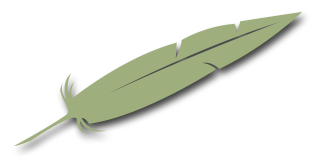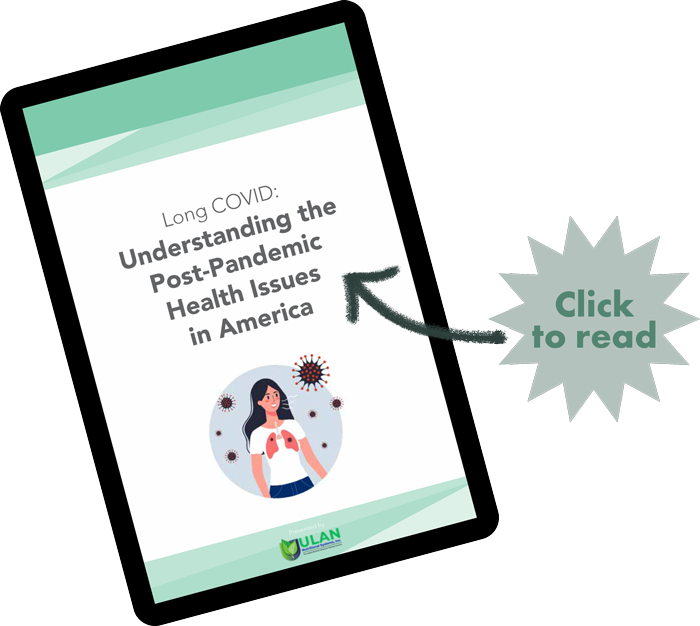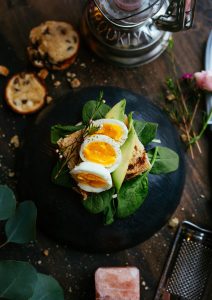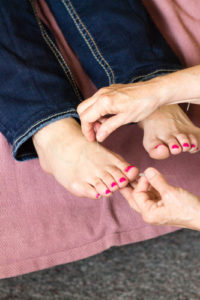- WE MOVED !!!
-
 Professional Acupuncture & Physical Therapy1118 East Superior Street
Professional Acupuncture & Physical Therapy1118 East Superior Street
Duluth, MN 55802(218) 724-3400 Clinic Hours
Mon8:00 am - 4:30 pmTue1:45 pm - 4:30 pmWed8:00 am - 4:30 pmThu8:00 am - 4:30 pmFriCLOSED

- Long Covid Booklet
Blog
Foods to help you overcome anxiety and depression
 Did you know that eating healthier foods gives you a better chance to reduce your depressive symptoms? Eating a diet of processed food does more harm to your body due to the fact that those foods may be high in sugars and fats.
Did you know that eating healthier foods gives you a better chance to reduce your depressive symptoms? Eating a diet of processed food does more harm to your body due to the fact that those foods may be high in sugars and fats.
Additionally, it’s known that there are approximately 10 times as many bacterial cells as human cells in the body. These bacteria serve many purposes including the curation of Vitamin K, digesting the food we consume and even regulating our immune system.
This implies that maintaining a healthy gut bacteria and overall diet can improve your mood.
SO WHAT CAN I EAT?
Studies show that dark leafy greens like spinach, kale, and Swiss chard decrease inflammation, which has been linked to depression. Nuts are another powerhouse used to fight depression. The omega 3 fatty acids found in most nuts can reduce the symptoms of depression. Decreasing daily sugar intake can also help. Excess sugar in the diet decreases a protein called brain-derived neurotrophic factor, which can lead to depression if there is not enough of it being produced.
Though symptoms of anxiety and depression vary wildly among individuals, often these symptoms can follow someone for months if not years, slowly wearing down the body.
Here are a few simple examples of foods that can help lift your mood:
Fatty fish: Fatty fish are high in omega-3. Omega-3 is a fatty acid highly connected to cognitive function. Salmon and sardines are a great choice being among the few foods containing vitamin-D.
Eggs: We probably already know this, but the egg yolk is a great source of vitamin-D as well. They are a complete protein, which simply means they contain all the amino acids the our bodies need to grow and develop properly.
Brazil nuts: Often those suffering from mood disorders have a heightened level of inflammation. Brazil nuts are high in Selenium, an antioxidant with anti-inflammatory properties. Brazil nuts are also anti-carcinogenic which can help prevent cancers from developing.
Pumpkin seeds:Potassium is needed to regulate the electrolyte balance and manage blood pressure. Pumpkin seeds as well as bananas are a great source of potassium. Some studies indicate that pumpkins seeds can have a positive effect on mood thanks to their high zinc levels as well. Zinc is essential for the brain and nervous system, in fact the highest level of zinc in the body is found in the brain regions involved with emotion.
Chamomile: For thousands of years people all over the world have used Chamomile to find relaxation thanks to it’s anti-inflammatory, antibacterial and antioxidant properties. Some people believe that the relaxing properties of this herb come from the flavonoids present, this is why a warm aromatic chamomile tea is a very popular remedy for managing anxiety.
Yogurt: Praised for it’s helpful bacteria, yogurt can be incredibly beneficial for many reasons. Gut health and brain health go hand in hand. Yogurt and other fermented foods can benefit the gut naturally all the while reducing anxiety and promoting happiness.
Green tea: Theanine, an amino acid found in green tea, has recently received popular praise due to its potential effect on mood disorders, such as Seasonal Affective Disorder. Theanine has anti-anxiety and calming effects which can increase the production of serotonin and dopamine. Green tea is easy to add to any diet, and is a great substitute for soft drinks or coffee as green tea also contains caffeine.
WHICH FOODS SHOULD I AVOID?
Avoid foods made with added sugars or flours such as baked goods (donuts and pastries), breads, pastas and cereals. One should also minimize the consumption of animal fats, processed meats such as bacon, and even butter.
It’s important to remember that health starts from within. Maintaining a healthy balance of self-care, such as providing yourself with adequate sleep, hydration and physical activity is just as important as eating well. The road to wellness isn’t always paved, but the good news is that we are here to help guide you though this transformation right in Duluth MN.
If you are somebody who suffers from depression and you are looking for natural, holistic solutions, maybe give these suggestions a try. If nothing else, it is worth looking into. But most importantly, once you find the right path to correcting depression, follow it. Everybody is different and there is no one right answer.
Building Protective Qi with TCM
Everybody gets sick at some point in their life. For some, it’s just a quick weekend thing. For others, it can last for several days and even weeks. Why do some people always get sick whenever there is a bug going around and others don’t? It all comes down to immunity. People who have a stronger immune system, tend to be sick less often. Those with compromised or weak immune systems, seem to get sick at the drop of a hat. There are many things that can be done to strengthen the immune system though. And Traditional Chinese Medicine is probably one of the best and least invasive ways to boost the immune system, not just during the winter months, but all year long.
In Traditional Chinese Medicine, the immune system is called Wei Qi (pronounced “way chee”). The Wei Qi is closely associated with the internal organs, specifically the lungs. When the energy of the lungs is well-balanced, Wei Qi is strong and can easily fight off any external attacks. In Traditional Chinese Medicine, the lungs dominate the skin and breathing. If lung function is deficient or compromised in any way, then the body is more open to external pathogens like viruses and bacteria. Common symptoms of decreased Wei Qi or immunity include coughing, sneezing, runny nose, watery eyes, sore throat, headaches, fever and/or chills.
 Traditional Chinese Medicine is a medical system that has been around for nearly 4,000 years. There are many tools in the kit of a TCM practitioner. Probably the most commonly used tools for building Wei Qi are acupuncture and herbal formulas. Acupuncture uses hair-thin stainless steel, single-use needles that are placed on specific acupressure points that can boost immunity and balance hormones. When the hormones are stressed and unbalanced, illness can occur. Acupuncture points associated with Wei Qi can strengthen the circulation of energy and blood, which will then boost the body’s defense mechanisms, thus helping to prevent illness. Regular acupuncture treatments can also cause the brain to increase T-cells in the body. T-cells destroy bacteria and viruses. Acupuncture needles provoke the body’s immune response by sending T-cells and white cells to the needle sites to fight off the invaders. These effects can last for several days, which keeps immunity higher than normal.
Traditional Chinese Medicine is a medical system that has been around for nearly 4,000 years. There are many tools in the kit of a TCM practitioner. Probably the most commonly used tools for building Wei Qi are acupuncture and herbal formulas. Acupuncture uses hair-thin stainless steel, single-use needles that are placed on specific acupressure points that can boost immunity and balance hormones. When the hormones are stressed and unbalanced, illness can occur. Acupuncture points associated with Wei Qi can strengthen the circulation of energy and blood, which will then boost the body’s defense mechanisms, thus helping to prevent illness. Regular acupuncture treatments can also cause the brain to increase T-cells in the body. T-cells destroy bacteria and viruses. Acupuncture needles provoke the body’s immune response by sending T-cells and white cells to the needle sites to fight off the invaders. These effects can last for several days, which keeps immunity higher than normal.
Chinese botanicals are another great way to build up Wei Qi. Any herb or herb combination that boosts or enhances the immune system will keep the body functioning at its optimal level. In TCM, there are many individual herbs that boost the Qi and some specifically boost the Wei Qi. Astragalus (huang qi) is one of the more frequently used Chinese herbs. It is used to tonify the Wei Qi, fortify the lungs and protect against pathogens. Studies show huang qi increases white blood cells, which can help fight off infection and pathogenic invasions.
Cordyceps (dong chong xia cao) is another immune-boosting herb. Cordyceps enhances immunity by increasing white blood cells, T-cells and interferon. It also can inhibit the growth of cancer cells. While cordyceps works very well by itself, it works even better when used as part of a formula, as do most Chinese herbs. When looking to use Chinese herbs, be sure to seek out a qualified herbalist and TCM practitioner to insure overall safety of the herb or formula.
TCM and all of its modalities can be very helpful in staying well and healthy. When added to the practices of proper sleep and nutrition, drinking lots of water and mild exercise, TCM will help keep the body’s immune system healthy. And hopefully if illness does occur, it will only be mild. Here’s to your health!
What Is Seasonal Affective Disorder?

Seasonal Affective Disorder (SAD) is a condition believed to be linked to a lack of sunlight where the individual experiences mood changes and emotions similar to depression. SAD occurs mostly in the Fall and Winter months when there is less sunlight exposure. It’s found that around 5 percent of people may experience SAD lasting 40% of the year (especially in areas with less sunlight such as the Pacific Northwest and other Northern regions), and it is more common in women than in men.
SYMPTOMS OF SAD
The most common symptom of SAD is a feeling of sadness or a depressed mood. Other symptoms may include any of the following:
• changes in appetite
• cravings for sweet & starchy foods
• fatigue and low energy
• depression/low mood
• social withdrawal
• decreased libido
• aches and pains
• irritation
• Increased restlessness (such as pacing)
• difficulty focusing
Symptoms vary from person to person, but they can be severe enough to disrupt daily life. While SAD can be a frustrating condition, there are treatments and coping techniques available.
Here are some general guidelines that can help structure the treatments:
- Keep treatments simple by addressing the root of the disorder instead of treating symptoms.
- Begin treatment at any time; however, the summer is ideal. By doing so, there is a good chance the practitioner can break up the cyclic pattern of symptoms so that they are reduced or even eliminated before the problematic seasons arrive.
- Treat the patient 1-2 times a week, depending upon which interval works best for them and in light of the degree of their symptoms.
METHODS TO REDUCE SAD
Light therapy: This involves daily exposure to a full-spectrum light that duplicates natural sunlight. When used regularly throughout the winter months, light therapy has been shown to reduce symptoms in 70 percent of SAD sufferers. Please note that light therapy is different than tanning in a tanning bed.
Psychotherapy: Working with a counselor to learn to navigate negative thoughts and behaviors can be beneficial.
Exercise: As a natural antidepressant, exercise may alleviate some of the symptoms of SAD. Try swimming, biking, lifting weights, yoga, or just walking outside.
Acupuncture: Acupuncture can work to rebalance the body’s Qi, relieve your symptoms, and reduce stress.
Medication: Antidepressant medications are a common treatment, but it should be noted that these medications often have side effects. There are also many natural and effective approaches available to combat SAD if over-the-counter medications aren’t something you want to start with.
Research Update – EFT, Depression & Anxiety

WHAT IS EFT TAPPING?
Emotional Freedom Technique (also referred to as EFT or Tapping) is a form of psychology that uses physical tapping techniques to combine the mind, body and its energy fields. The action of tapping is done to treat different emotional and physical illnesses such as anxiety and depression.
HOW DO YOU TAP?
EFT tapping therapy combines aspects of cognitive therapy, exposure therapy and physical touch. For each time you run through this practice, try targeting one specific issue at a time. If you are able to identify more than one fear or stressor, feel free to repeat the process shifting your focus every time. As with meditation, think of this as a practice; set yourself goals to work toward, not necessarily something you’re trying to perfect.
Identify a single concern or fear. Before and after your tapping session rate the level of distress this issue brings you. Use the 1-10 Subjective Unit of Distress (SUDS) scale, with 10 being the most distressing.
The Setup: Prior to tapping, you need to establish a phrase that explains what you’re trying to address. It must focus on two main goals:
- acknowledging the issues
- accepting yourself despite the problem For example a setup statement could be “”Even though I feel [scared in this moment] because of [PTSD], I deeply and completely accept myself.“
Each point is tapped in a specific sequence about five to seven times. While tapping, the participate repeats a short phrase to maintain focus on the problem at hand.
HOW DOES IT WORK
This technique is believed to balance the energy system within the body by targeting “hot spots” or meridian points with rhythmic fingertip tapping. Research suggests the tapping sends signals to the brain, allowing access to negative emotions or issues needing balance.
There are 12 major meridians that mirror each side of the body and correspond to an internal organ. However, EFT mainly focuses on these nine acupressure points:
- karate chop small intestine meridian
- top of head governing vessel
- eyebrow bladder meridian
- side of the eye gallbladder meridian
- under the eye stomach meridian
- under the nose governing vessel
- chin central vessel
- collarbone kidney meridian
- under the arm spleen meridian
WHAT STUDIES HAVE SHOWN
Studies taken among several diverse demographics that ranged in geographic location, gender, age and so on were performed in order to get the most accurate results among the majority of the population. Through research and studies, EFT has been seen to effectively treat many symptoms of depression, anxiety, trauma, headaches, addiction and other similar physical and emotional challenges. EFT has also been seen to improve brain function and structure among those who use it regularly.
If you struggle with anxiety or depression and want a more natural approach to healing from within, we suggest looking into EFT Tapping. Other natural methods to help include acupuncture and/or acupressure. If you have any questions regarding how Traditional Chinese Medicine can help aid your anxiety and depression, schedule an appointment with us. We are conveniently located on 2nd Street in Duluth MN.
Acupuncture and Autoimmune Diseases

Autoimmune diseases are a collective group of disorders that plague nearly 50 million people in the United States today. When a person suffers from an autoimmune disease it means their own immune system is attacking the body and altering or destroying the tissues. Autoimmune diseases include things like rheumatoid arthritis, lupus, Crohn’s disease, pernicious anemia, multiple sclerosis, irritable bowel disease and Parkinson’s disease.
Conventional medicine can diagnose 100 different autoimmune conditions. Unfortunately, the treatments available to people with these disorders is not as plentiful through conventional medicine. It typically involves the use of pharmaceuticals that can have side effects that are as bad, if not worse, than the symptoms of the disease itself. And even worse, many people are told they have no options. This is where Traditional Chinese Medicine can be beneficial.
Acupuncture treatments are completely customizable. Traditional Chinese medicine practitioners don’t treat based on the Western medical diagnosis. They attack the disease based on its diagnosis in Chinese medicine. This means that they not only want to treat the symptoms, but also get to the root of the problem. This is much different from Western medicine with its one-size-fits-all type of treatments. The ability to treat each person as an individual with their own unique diagnosis is why traditional Chinese medicine is so successful.
Many factors play into an autoimmune disease. Traditional Chinese Medicine looks at the body as a whole, allowing the patient to get a more complete treatment, usually with better results. Since autoimmune diseases are thought to be a deficiency in people’s immune-system responses, TCM practitioners will work to restore and rejuvenate the factors that are vital for good immunity. These things include blood and the energetic life force known as qi (pronounced “chee”). There can also be underlying genetic factors involved in autoimmune diseases, so acupuncturists may also work on building up a patients essence or jing. Research has shown that acupuncture causes responses in nerve cells, as well as in parts of the brain. By utilizing acupuncture, those suffering from an autoimmune disease can, over time, reprogram their brains and cells to perform as intended.
The use of electroacupuncture may prove useful for people suffering from autoimmune diseases too. Electroacupuncture emits mild electrical stimulation to acupuncture needles. These light shocks trigger the body to produce hormones that suppress pain and inflammation. This helps raise endorphins circulating in the bloodstream. Endorphins are the body’s natural painkillers.
Chinese herbal formulas can also be very effective in the treatment of autoimmune diseases. Chinese herbs have specific qualities that can help boost blood, qi and jing. When acupuncture and Chinese herbs are combined, the effects can be quite favorable. The herbs will actually compliment the acupuncture treatments by extending the effects of the needles. Many times this will shorten the number of treatments required, as the patient will start to see results sooner.
Many people dealing with autoimmune diseases also experience high levels of stress because of their disorder. It can be very stressful trying to lead a “normal” life with severe pain and other symptoms. Studies show acupuncture is very relaxing, and it helps reduce excess cortisol levels in the brain that contribute to chronic stress.
As autoimmune sufferers start to see improvements with acupuncture treatments and herbs, they may also be able to do things they couldn’t before, like exercise. Exercising not only improves blood flow, but it also increases immunity. Exercise also increases the amount of endorphins in the body. So just by receiving regular acupuncture treatments and herbal supplements, those suffering from autoimmune diseases may be able to lead a much more normal life with a lot less pain and suffering.
If you are dealing with some type of autoimmune disease, consider giving Traditional Chinese Medicine a chance. The outcomes may be life changing.
